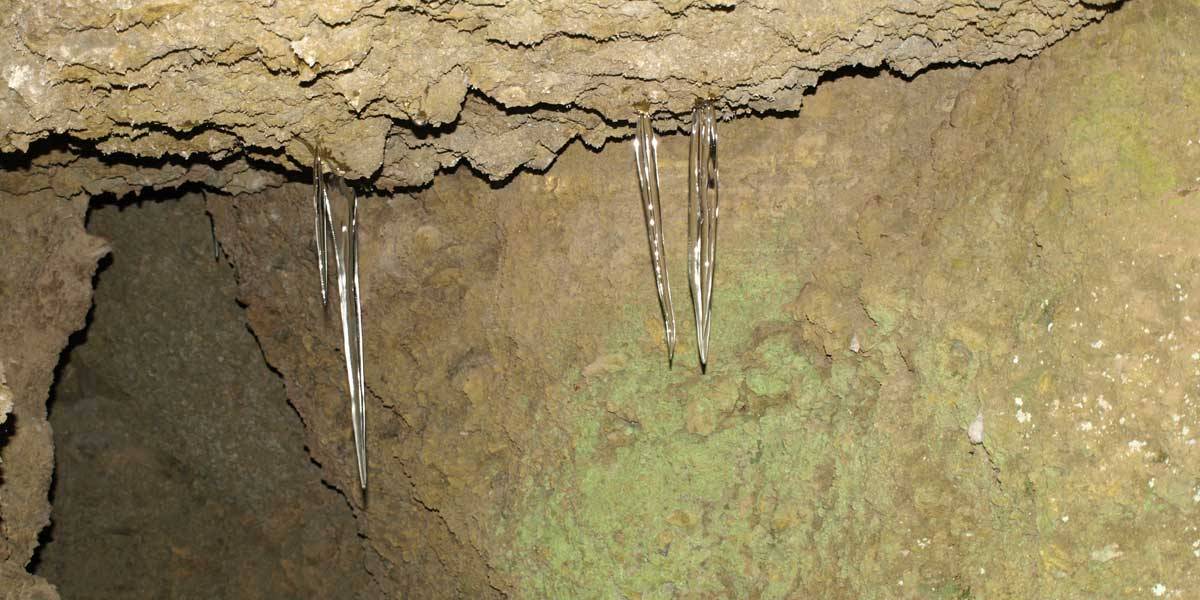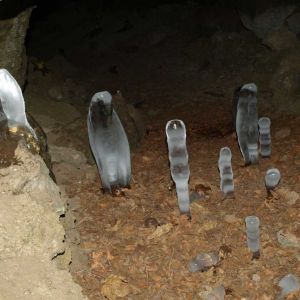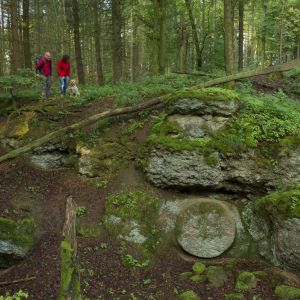As man-made chambers in the volcanic rock of the Fischbach volcano, the Birresborn ice caves have an eventful history.
The Kalem volcano was not mined and is an Early Pleistocene stratovolcano. From a nature conservation perspective, the FFH area presents itself as a mixed deciduous forest ecosystem worthy of preservation, rich in rock and rubble heaps and old wood, with a natural cave system that has a long-standing importance as a mating and winter quarters for bats.
Facts
- Size: 112 hectares
- Area: Birresborn
- Districts and independent cities: Vulkaneifel
- Associated communities and non-association communities: Gerolstein
Habitat for many bat species
So far, 11 species of bat have been detected here, including protected species such as the Bechstein's bat, the greater mouse-eared bat and the pond bat. Another species of field mouse, the greater noctule, finds its habitat in the deciduous forests that cover the cinder cone at the former eruption site of the Fischbach volcano.
The vegetation of the adjacent floodplain of the Fischbach is characterized by a colorful mosaic of alternately moist grassland communities, spring meadows, wet meadows, tall herbaceous meadows as well as species-rich, colorfully flowering lean meadows with fragments of bristly grass. The stream itself is bordered by a gallery-like ash-alder floodplain forest.
Location:
Habitat types (Appendix I):
- 6430 - Moist tall herbaceous meadows of the planar and montane to alpine levels
- 6510 - Poor lowland hay meadows (Alopecurus pratensis, Sanguisorba officinalis)
- 8150 - Siliceous rubble heaps in the mountains of Central Europe
- * 8160 - Calcareous rubble heaps of the colline to montane levels of Central Europe - * = Priority habitat type
- 8210 - Limestone cliffs with crevice vegetation
- 8220 - Silicate rocks with crevice vegetation
- 8230 - Silicate rocks with their pioneer vegetation (Sedo-Scleranthion, Sedo albi-Veronicion dillenii)
- 8310 - Caves not open to tourism
- 9130 - Woodruff beech forest (Asperulo-Fagetum)
- * 9180 - Mixed ravine and slope forests (Tilio-Acerion) - * = Priority habitat type
Species (Appendix II)
- Bechstein's bat (Myotis bechsteinii)
- Great mouse-eared bat (Myotis myotis)
- Pond bat (Myotis dasycneme)





